Spotlight on Brittany Greeson
Sep 7, 2015
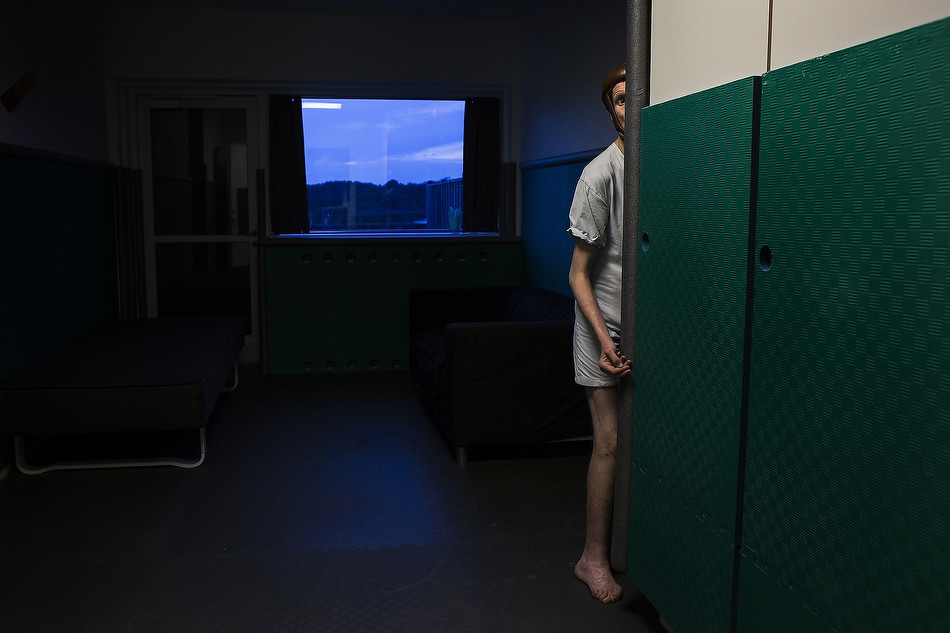
TID:
Thanks for being open to this, Brittany. This image is subtle and seems to ask more questions than it answers, but it’s part of why I like it so much. Can you tell us a little of the backstory?
BRITTANY:
Thank you! I’m really excited to talk photo and have been a longtime follower of TID. So, I had this amazing opportunity to study at The Danish School of Media and Journalism in Aarhus, Denmark last Fall. There we were assigned to create a magazine with a theme as a class project. We all agreed on the theme of voice and it was then that I took the idea of finding those who are sometimes voiceless. One of my good friends Soren Degn had lived by the institution of Solund his whole life and suggested it to me. For he and his friends, Solund was an everyday part of their hometown of Skanderborg.
For me, coming from the states, It was completely new territory. After working out access over the course of a month, I was finally able to start photographing there and eventually met Kenth and his housemates. My original plan was to do an essay about the institution but I ended up finding that focusing it in on a narrative like Kenth’s made the story more compelling. I wanted to show the depth of his character and the support network around him. This, in my mind, was the story of Solund. It’s a place that I personally feel has given a good life to a lot of people who otherwise wouldn’t have that type of care. This image of Kenth was made the first day I met him.
It’s funny thinking about it because people look at this image and they tell me how strange they think it is. In a humorous way, I think it shows how I was the strange one. For me, this image shows Kenth’s curiosity as well as his original feelings toward me. I’d hide around the corner, too, if some tall blonde girl I had barely met poked her big camera in my room.
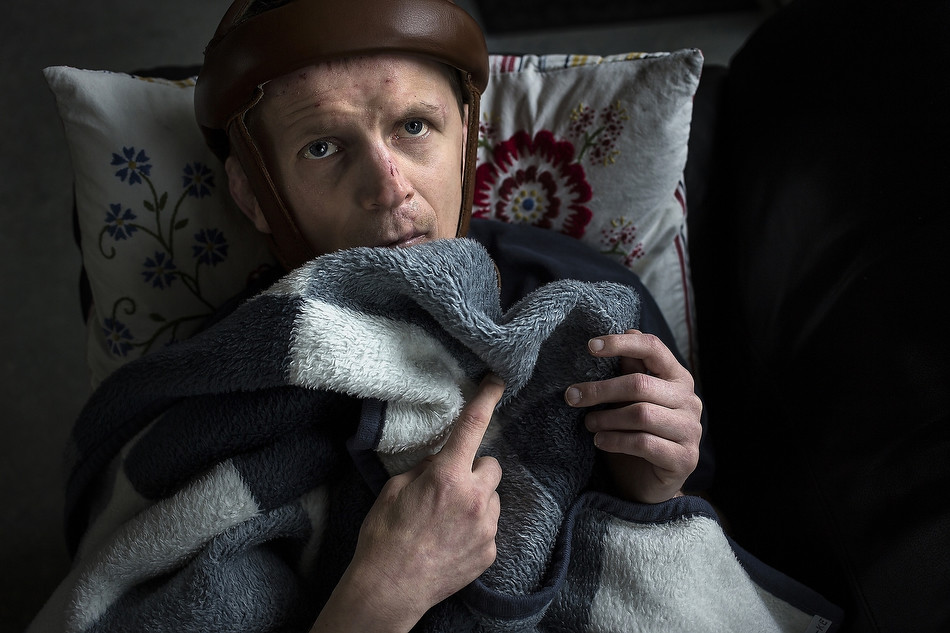
TID:
This stemmed from your work while in school in Denmark. Can you talk about some of the differences in teaching/education styles there?
BRITTANY:
I like to put it this way; Western Kentucky University gave me a fundamental and disciplined background. I learned what makes a good photograph, how to manage deadlines, how to push myself, how to be a good journalist, and how to have a thick skin. I definitely would not know what I know today without WKU. The Danish School, however, was less focused on the technical and more focused on what photos mean, why we take them and how to embrace our own style.
At the Danish School I was encouraged to break the rules of traditional newspaper photography. Their student photographers are thinking about combining art with journalism. They’re trying out old film while also trying out new techniques. I felt like they weren’t as afraid to take risks. There I felt like I really began asking myself how I want tell stories and began to feel like I could experiment. What really stands out to me is that I went in so hard-headed about how one should photograph.
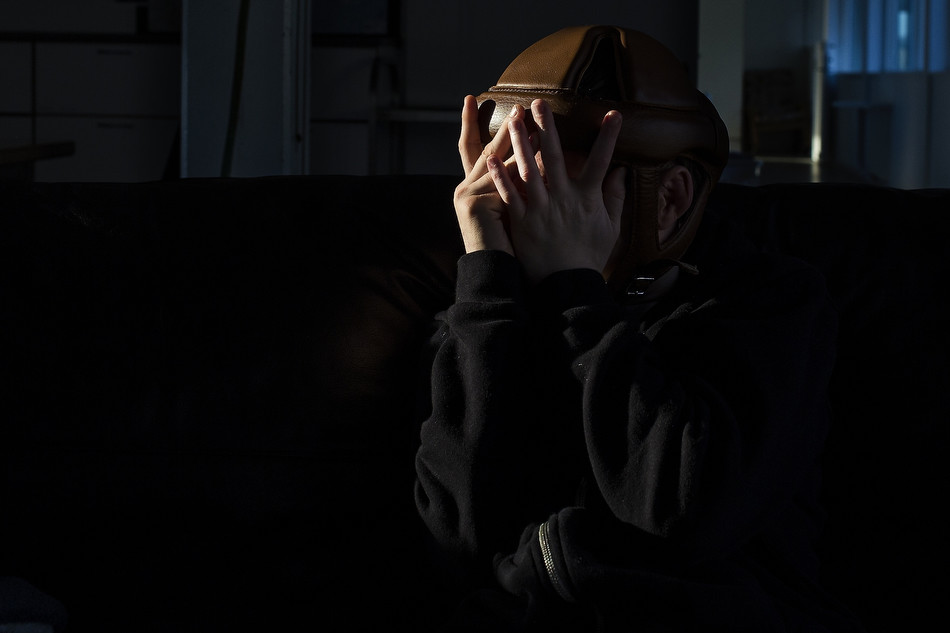
I left simultaneously confused and inspired because I realized how huge the world of photography is and how many possibilities there are. I remember meeting with my professor once, Soren Pagter, during a critique of this story. He said to me, “Your photos are almost too perfect. I want you to shoot messier. Try something out of focus or with blur to it. I want you to explore a mood.” I nearly died because my education at WKU had taught me that you have to nail your focus and have a super clean composition. We had never really discussed mood. In my head I was thinking “No. There is no way in hell I’m going to shoot a blurry photograph.
Yet, now, looking back on that, I think Soren was a freaking genius. He wasn’t saying that my photographs were perfect as if to praise them, he was saying that they lacked a sort of depth. To be honest, it wasn’t until I left the Danish School that I really began to appreciate that critique. I try to use that in my storytelling today and I feel like it’s made me a better photographer and journalist. My mind was blown at that school. Now that I’m back at WKU I feel I’ve had the best of both worlds and so much room to grow.
TID:
How have these differences impacted your career?
BRITTANY:
Being at the Danish School and being at WKU has really shown me that stories and the pursuit of a larger idea are what make me want to go out into the world with a camera. While I do enjoy daily work, I want to spend more time going deeper into society and into the lives of people. That sense of intimacy with a stranger is really the best part of the photographic process for me. I also just really like the challenge of taking a theme or a narrative and using imagery to convey it to an audience.
It’ll just be a matter of finding the funding to do that type of work once I graduate, but I’m glad I’ve discovered what it is that fulfills me.
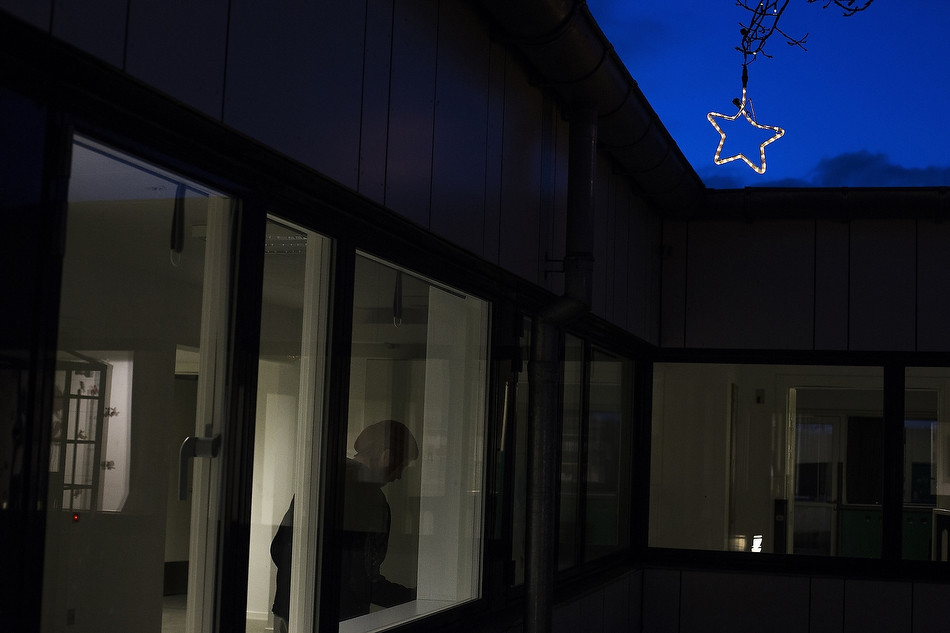
TID:
Back to the story. How did you overcome language and access issues? Other problems as well?
BRITTANY:
To be honest, once I was finally able to meet with the administrative staff at Solund they were extremely welcoming and open to what it is I wanted to do. It isn’t like it is here in the states in terms of access to healthcare institutions. I think Solund is proud of what they’re doing today for their residents and once they saw that my intentions were to focus on those residents and their experiences, they were able to let me photograph freely. In Denmark, almost everyone speaks English so that wasn’t much of an issue. I think the only issue came when I was trying to focus in on Kenth. I wanted to go about it the right way so I needed to convince his caretakers as well as his family before I began. Kenth can’t speak for himself, he’s mentally around 18 months old. Obviously, they wanted to be sure that I wasn’t going to try to portray him as a freak-show. I completely understand that. Sadly, there are a lot of stories out there that portray the mentally handicapped in that way.
So, I sat down with one of Kenth’s caretakers Neils and I showed him some photos I had already taken. I interviewed him and I asked him what he felt I needed to know about Kenth and what it is through my photographs he felt was important to show. Once I met his parents and explained to them what I was doing and shared photos with his mother, things went rather smoothly. Then, It was just a matter of getting Kenth to warm up to me. We couldn’t talk to each other so I accepted that it would just happen organically. Early on, there were a few times that he hit me or pulled my hair. But, I was new and he was frustrated or he just didn’t realize it hurt. It just took time. Eventually, he started thinking of me as one of his caretakers and I learned his form of sign language.
The last day I saw him left a big impact on me actually. It was Solund’s Christmas dinner. Kenth’s family, his caretakers, and I were all there having Christmas dinner with him and his housemates. After everyone had gone and Neils was putting him to bed, we had to say our goodbyes. I know for Kenth it probably wasn’t a huge deal for me to leave, but I had grown very attached. He and Neils both gave me a hug when I left that evening. That was something so simple that made me feel like I had done my job well.
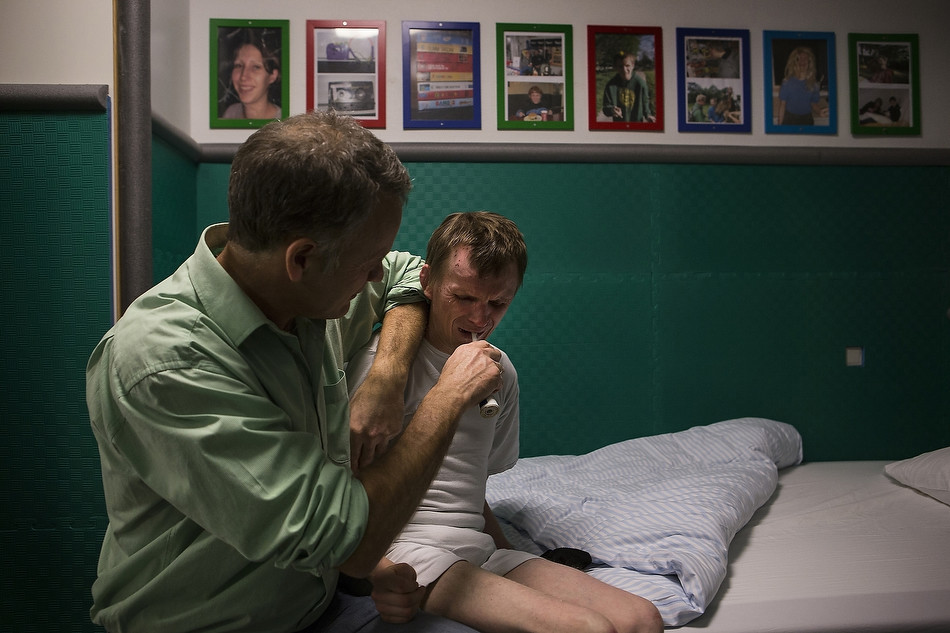
TID:
What have you learned about others from this project?
BRITTANY:
I think I learned that if you’re just open and honest with people and real about your intentions, people will usually let you into their lives. That’s a beautiful thing. Had Solund, Kenth’s caretakers and his family not have been so welcoming, we wouldn’t be doing this interview about this image. I also learned just how selfless people can be. I saw a form of grace and servitude I’m not sure that I’m personally capable of. While it’s technically a job, Neils and the rest of the staffers in Kenths house treated it as more. Caring for the mentally handicapped is exhausting and these people do it in a very personalized and extensive way.
They do so with a light hearted attitude. They genuinely cared about making the resident’s lives better and they were so caring towards me as well. I had never worked around the mentally handicapped before. Like anyone who's uneducated about the topic I had my preconceived notions. Those disappeared as soon as I spent time around them. I want others to know that these people are not broken. They are not to be treated as throw aways in our society. They are so intricate and diverse and have such depth to their personalities. Working on this story made me so frustrated with the health care system in the United States. We have to do better.
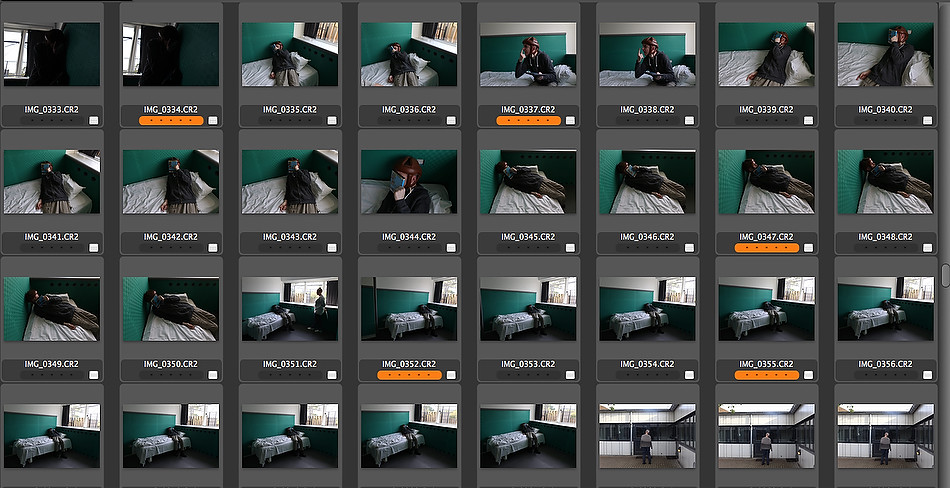
TID:
What did you learn about yourself in this shoot?
BRITTANY:
I learned how much I do not know. Again, I saw a form of selflessness I’m not sure I’m capable of. I learned that I have to work on who I am as a person as much as I have to work on learning photographic techniques to become the type of photojournalist I want to be. I know this sounds like a whole spew of hippie slogans, but I genuinely think that who you are behind the camera reflects in your work. There's a lot of different ways to tell a story and how you choose to tell it is a great responsibility to your subject.
There was a time in the shoot in which Kenth was having a fit and several of his caretakers had to hold him off. There's one style of thinking that says that was “The Shot.” I didn’t feel like that was relevant to the story and it was not a fair representation of who Kenth is, so I didn’t take it. He rarely does that. Maybe that makes me bad at my job, so be it. I also learned not to take what I do so seriously. I think this is so important for all of us to realize in such a competitive industry. There are billions of people who don’t care about our achievements, how pretty our photos are or how important we think our vision is. When you do this type of work you’re going to spend a so much of your time with your subjects.
Your subjects only care how good you are to them and that you’re working hard to tell their story with dignity and respect.
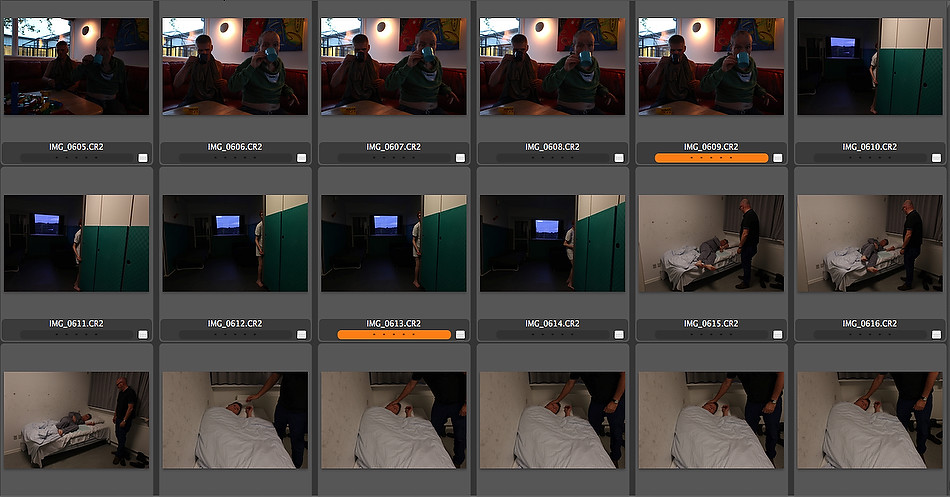
TID:
Now, onto the moment. Can you talk about the moments before the image, and the actual moment itself?
BRITTANY:
It was my first day photographing at Kenth’s house, house number 15. The houses are broken into several groups. I had been there most of the day and had photographed Kenth a little bit already, but I had gone to next door to photograph everyone at dinner time. After a while, I decided to come back over to Kenth’s side of the house. It was when I was walking past his doorway that I saw him hide behind the corner from me. I lifted my camera and he popped his head out for a few seconds, I took like two shots and he went right back to hiding again. This image is the moment of our interaction.
Me leaning over the gate and him peering out to evaluate the tall weird blonde girl with the black box in her hand. I remember looking down at the back of my screen laughing. I went to show the caretakers and they really liked the shot because of how Kenth was showing his personality. It wasn’t until a few weeks later that I pursued the story on him. So, I guess it’s safe to say that the interaction helped spark that original interest.
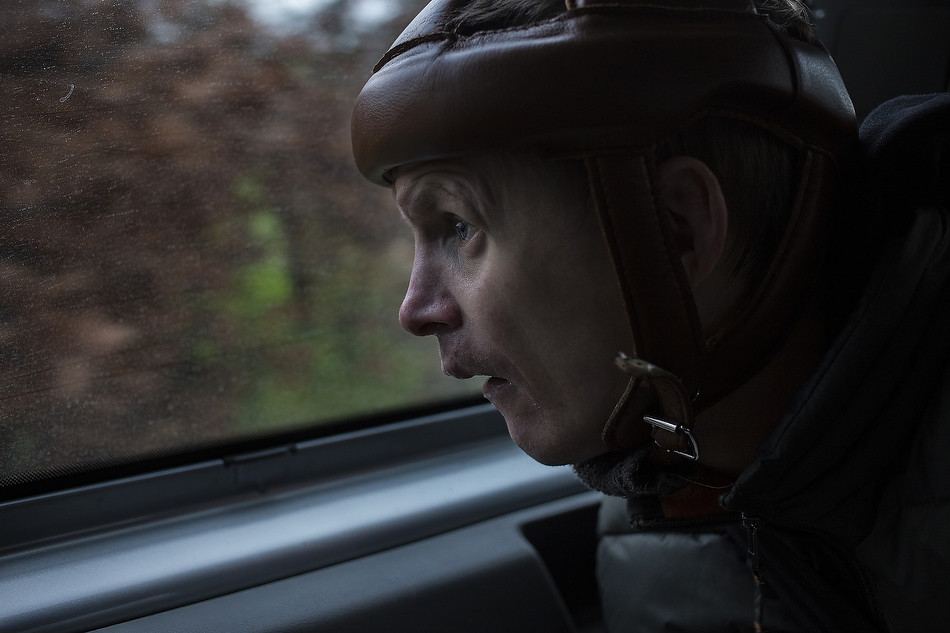
TID:
What lessons have you carried with you into your work at the Washington Post this summer?
BRITTANY:
I like to think that I carried with me a drive to find photographs that you have to linger on. I’m still trying to figure out how to do this. At The Danish School and working on this story I learned that a way to communicate an idea is by making your audience form their own questions. Throughout the internship, that was something I tried to keep in the back of my head. I think it’s an exciting challenge to do that with daily work. How do you get “the shots” while also getting the photographs that are unexpected? How do you find that one person with whom you really click and how do you make a compelling image of them that makes you want to know more? How do you give something a fresh perspective?
My editors and colleagues at The Washington Post were great at pushing me to do that. For instance, when an editor is asking you to go feature hunt. You reframe those questions like, “Okay, I need to go find something that I’m curious about and I need to photograph it in a way that also makes my audience curious without being too obvious. What can I do to give it a little bit of mystery?”

TID:
In conclusion, what advice do you have for other photographers?
BRITTANY:
Let go. Be a sponge and accept the fact that who you are, your work, and your vision is never going to be finished. Soak up inspiration from movies, books, music, your interactions with friends, and your personal experiences. Always keep that mindset you had as a freshman. You know, the time in your life when photographing a dead leaf was cool. The best photojournalists I know have maintained that curiosity as well as a balance. They know how to learn from other parts of their life that have nothing to do with photography. There have been times in the past that I’ve been so one-track minded and what I’ve realized is that attitude actually ended up hurting my work.
I’m finally starting to learn how to have fun with it. We have to get out of this conversation of one-upping each other with hours worked and recognition received. Yes, work hard, and make some sacrifices, but don’t sacrifice everything. Shoot things that genuinely fulfill you outside of daily work. Do things and meet people that challenge the ego rather than fuel it. Develop meaningful relationships with people who don’t care at all what you do. You’ll learn from them how to make images that engage past the photojournalism community. So, that’s my advice. Just let go for a change.

:::BIO:::
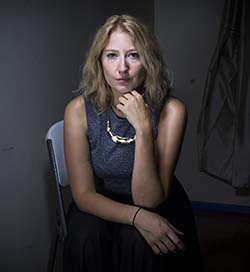
Born in Houston, Texas, (1993) Brittany Greeson spent the majority of her childhood between the great heights of the Appalachian Mountains in North Carolina and the rolling hills of Western Kentucky. Growing up in the South taught her to appreciate the quirks and little instances of beauty in the world but she somehow failed to pick up a Southern accent.
She is a student at Western Kentucky University seeking her BA in both Sociology and Photojournalism. In the Fall of 2014 she was an International Photojournalism student at The Danish School of Media and Journalism in Aarhus, Denmark. She has interned for The Oregonian, The Roanoke Times, The Flint Journal, and The Washington Post. Her work has been recognized by the Hearst Foundation, College Photographer of the Year, the National Press Photographers Association, and the Kentucky News Photographers Association. She will be attending the Eddie Adams Workshop in the Fall and upon graduation in the Spring of 2017, she hopes to continue chasing stories, whether it be in the freelance market or with a publication/agency. Flint, Michigan, a community of just under 100,000 people, will always have a special place in her heart.
You can see more of her work here: